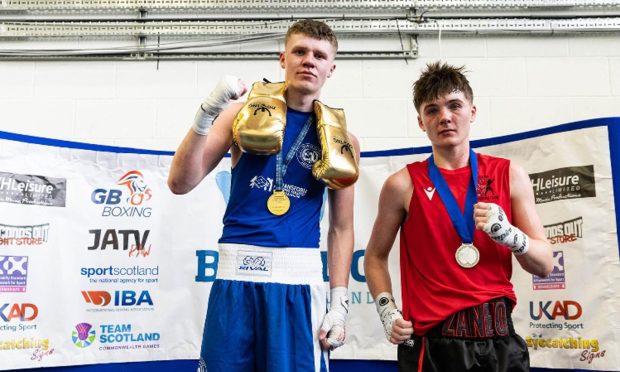I’ve never forgotten the Scotland the What stalwart Buff Hardie telling me how he interrupted a vacation in 1981 after learning some remarkable news from a hotel receptionist.
The Aberdonian, his wife Margaret and son John were in York on a balmy July day, but he was doing his best to keep in touch with the Ashes contest which was taking place at Headingley in Leeds, where England seemed to be slipping to an ignominious defeat against their traditional rivals Australia.
The tourists had gradually, inexorably turned the screw after amassing 401 in their first innings and gained a first-innings lead of 227 by bowling out the hosts for just 174 and enforcing the follow-on. This was in the period when there was still a rest day on the Test circuit, so when England limped to six for 1 by stumps on Saturday night, there were already plenty of people predicting they could check out of their hotel 24 hours early.
These forecasts were rapidly reinforced when the action resumed on Monday and, one by one, the home line-up were sent back to the pavilion in a dishevelled heap. Despite Geoff Boycott digging in for a tenacious 46, accrued during three-and-and-half hours of toil at the crease, he was eventually dismissed by Terry Alderman and England had been reduced to 135 for 7.
They still required nearly 100 runs to make their opponents bat again and it looked inevitable that Kim Hughes’ side would complete the job and go 2-0 up in the series. Even the normally pragmatic bookies at the ground were offering ridiculous odds of 500-1 on an English victory.
It was all over, or so it appeared to everybody else but Ian Botham who famously rolled up his sleeves, stared Dennis Lillee and Alderman in the eye, unveiled his beefy belligerence and subsequently produced one of the most magnificent and miraculous performances in the whole history of sport.
Even at this distance, his impact on the contest, which began 40 years ago this week, can hardly be overstated. At the outset, he was simply determined to play his natural game, work hard to reduce the deficit and, if there was the opportunity to galvanise the crowd and gain any sort of lead, that might just prove the catalyst for something special further down the line.
Cricket isn’t a one-man game, of course. Botham couldn’t have powered his way to an unbeaten 149 with a series of pugnacious cuts, hooks and cover drives which yielded 27 fours and a six, without the assistance of Graham Dilley, Chris Old and Bob Willis during partnerships of 117, 67 and 37.
Yet it was the uncompromising fashion in which he seized the initiative and wrested the situation away from the baggy green brigade which paved the way for the most astonishing transformation of the whole summer.
As Buff said: “I went to York for a holiday with my wife, Margaret, and we heard that England were in all kinds of trouble. So when we eventually returned to our hotel, I asked one of the staff: ‘Has the match finished?’
“He replied: ‘Not at all. Ian Botham went crazy in the second innings and he has given his team a narrow lead’.
“Well, when I heard that, I knew that I had to be there for the final day and it obviously became one of the greatest fightbacks ever with Bob Willis ripping through the Australians as England achieved an incredible win.”
That Tuesday was unforgettable for so many reasons. Regardless of Botham’s heroics, his side only led by 129 runs and the Aussies had all the time in the world to pursue their modest target. They were coasting along at 56 for 1 shortly before the lunch break, when Willis, the Bob Dylan aficionado, left their hopes blowing in the wind with an electrifying spell.
Suddenly, they were 58 for 3, then the same score for four, 65 for five, and Headingley had been turned into a cauldron of raucous noise. As Willis struck again and again to reduce the pursuers to 75 for eight, it was almost impossible to recall what had happened on the first three days.
Lillee and Ray Bright managed to add 35 runs together and their goal was now in sight. But the wild-eyed Willis, all whirling dervish and wicked pace, would not be denied and he removed this last duo to finish with the figures of eight for 43 from just over 15 overs of high-octane hostility.
Buff, who sadly left us last winter, just a year after Willis’ death, spoke of how the crowd could barely credit what they had just witnessed. As he declared, this was one of the most amazing recoveries in the chronicles and only the second time that any team had triumphed after being forced to follow on.
At the climax, Willis, who had been written off by some pundits, gave a passionate interview to the BBC’s Peter West which bristled with anger and indignation at some of the scathing pieces which had appeared in the press. He answered those in the best way possible and, thereafter, the Australians were beaten in the next two Tests and England won the series 3-1.
It is one of the most mesmerising chapters in Ashes folklore. And on the 40th anniversary, it remains treasured by cricket buffs everywhere.
Everywhere but Oz!










